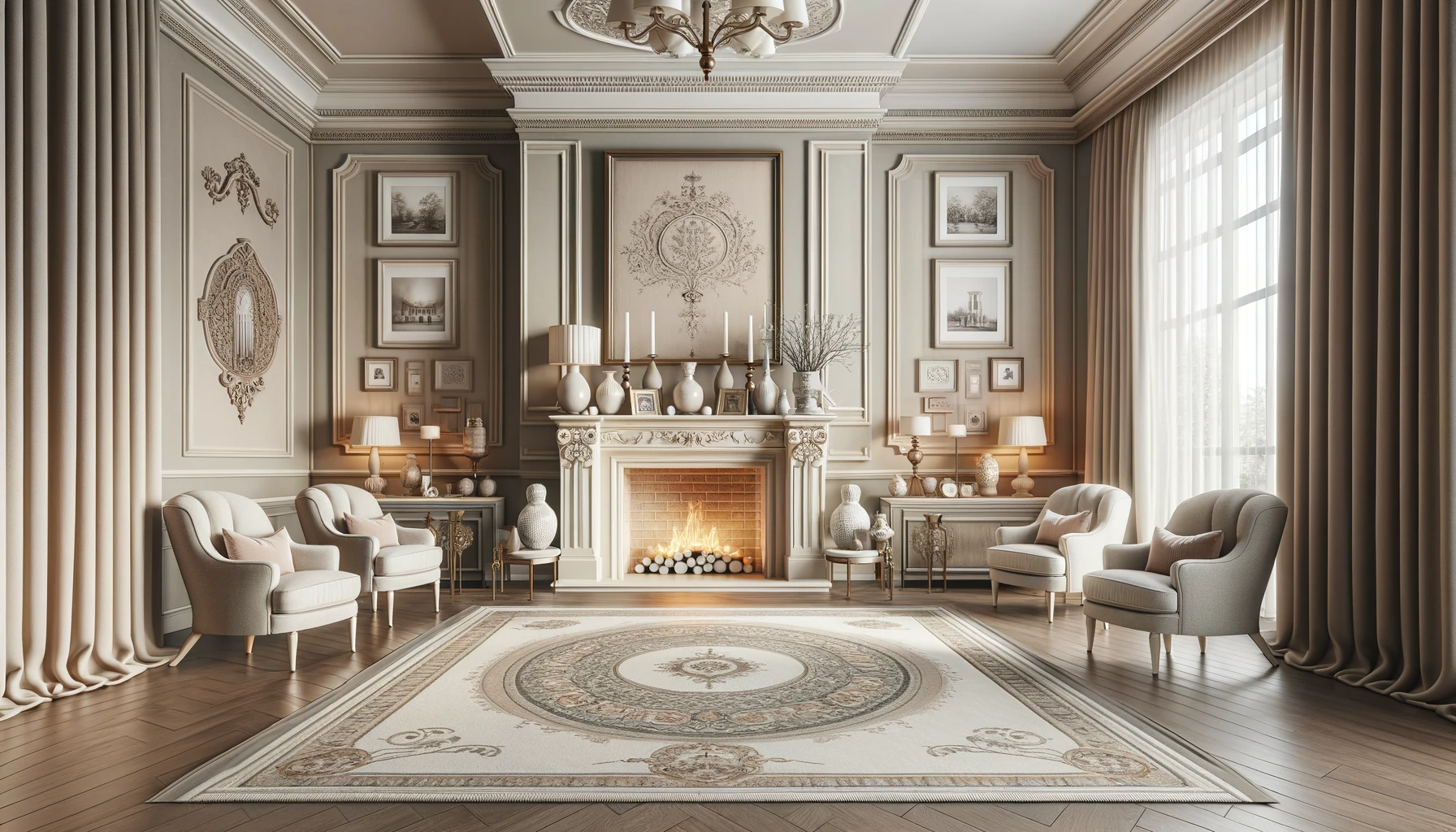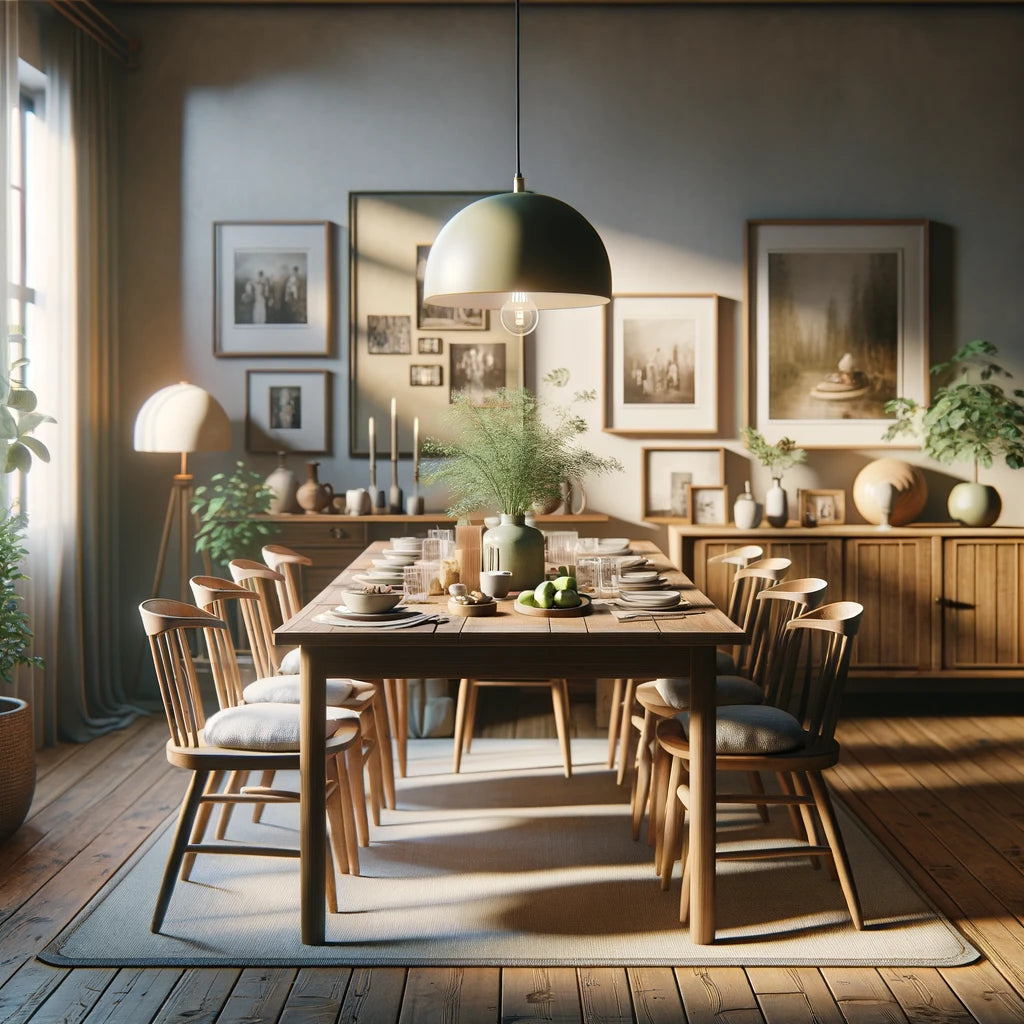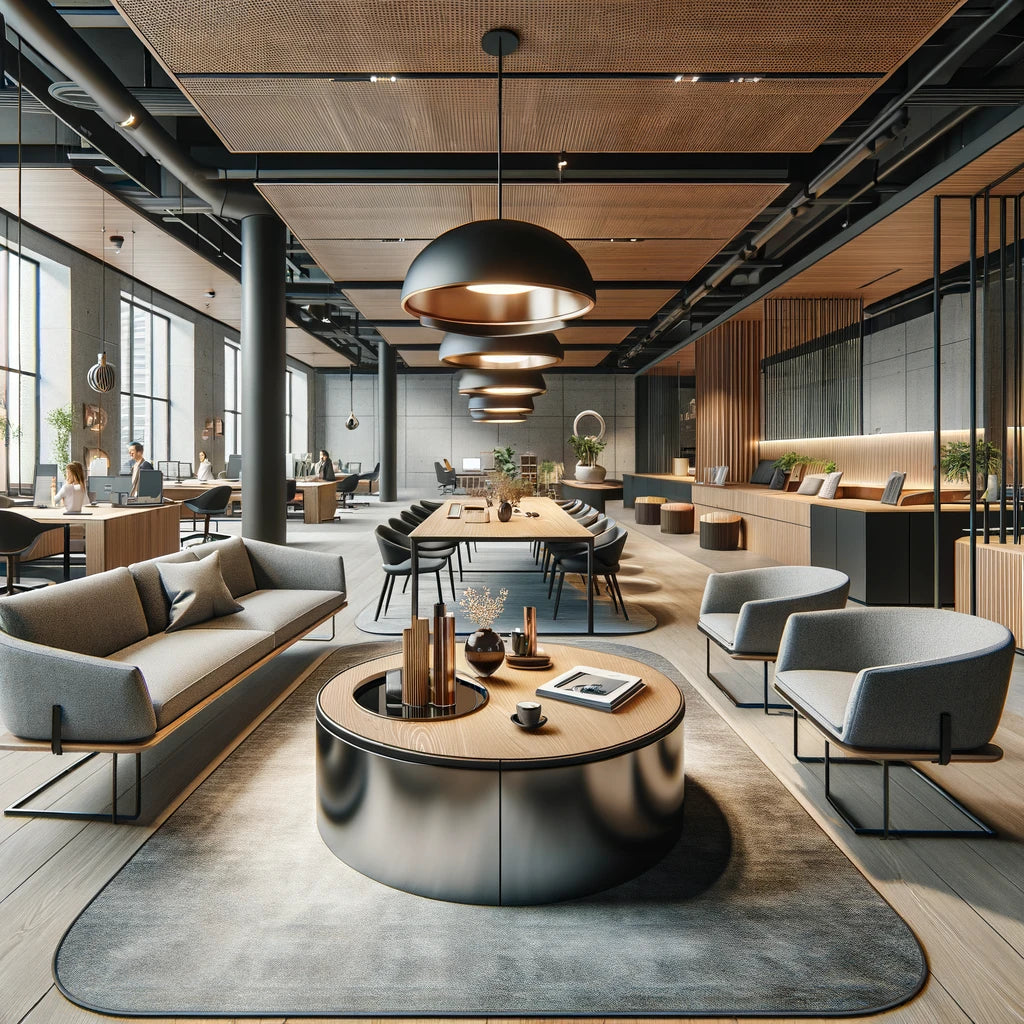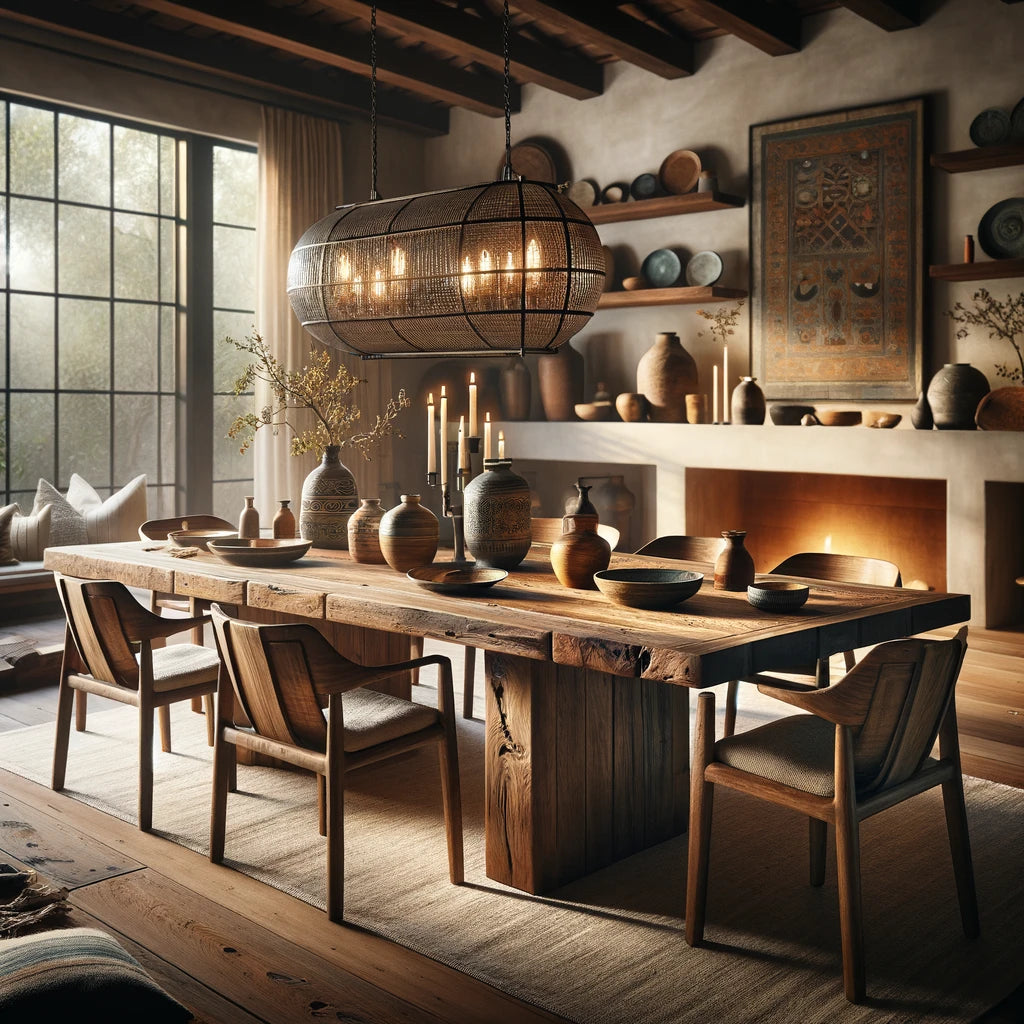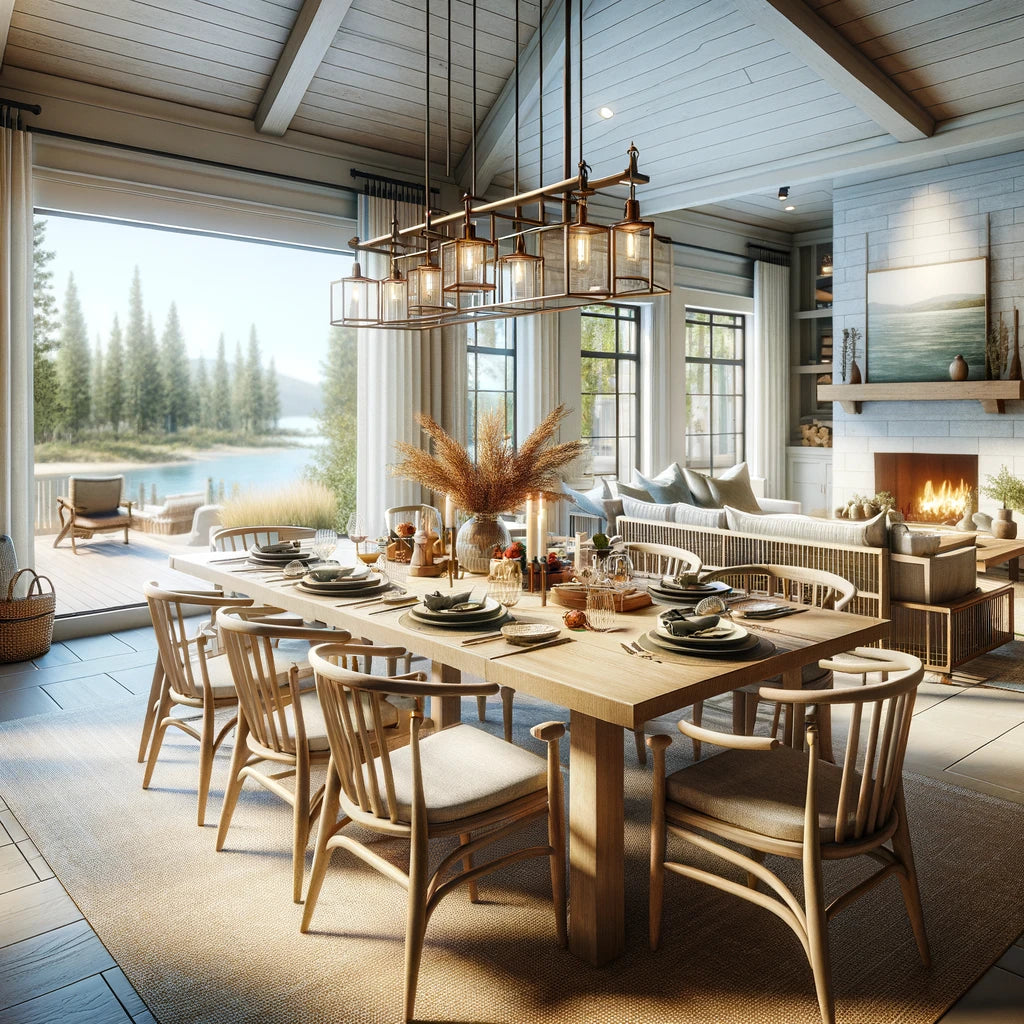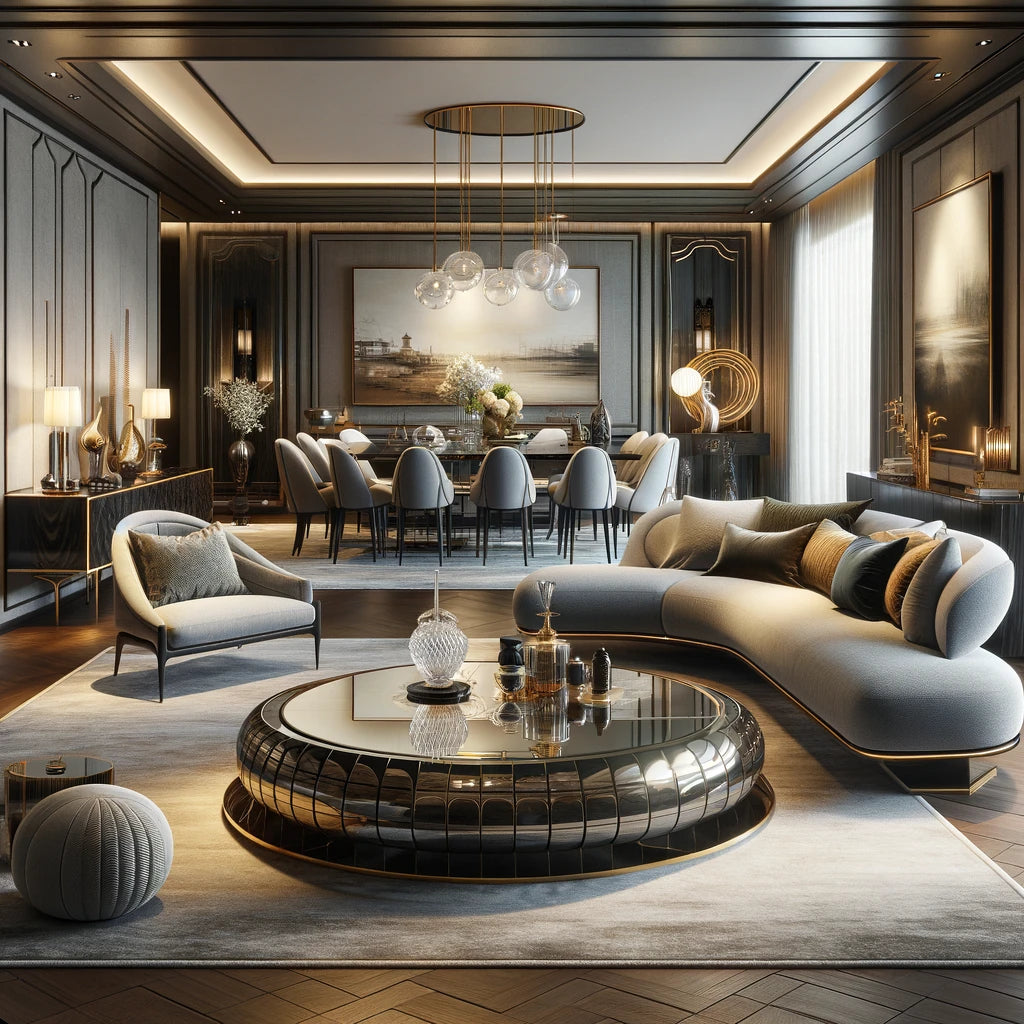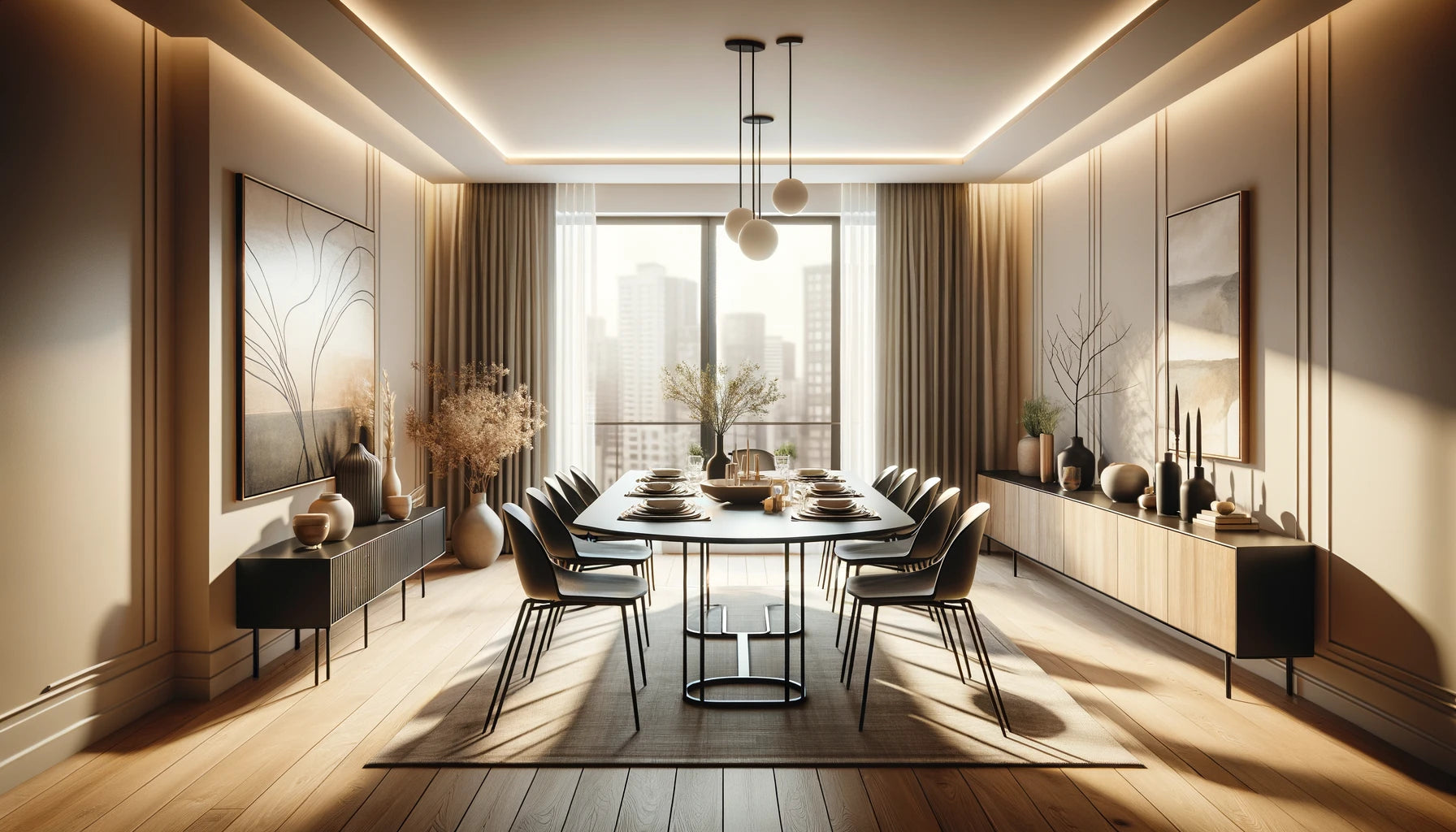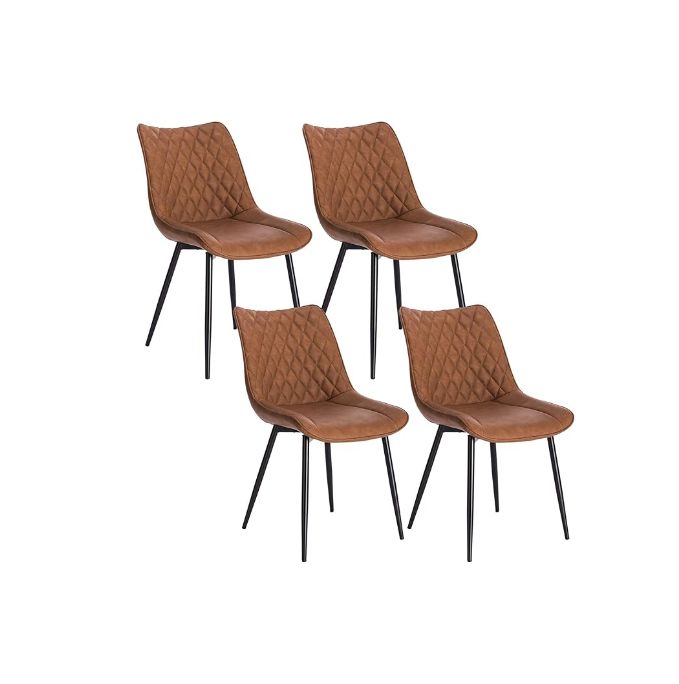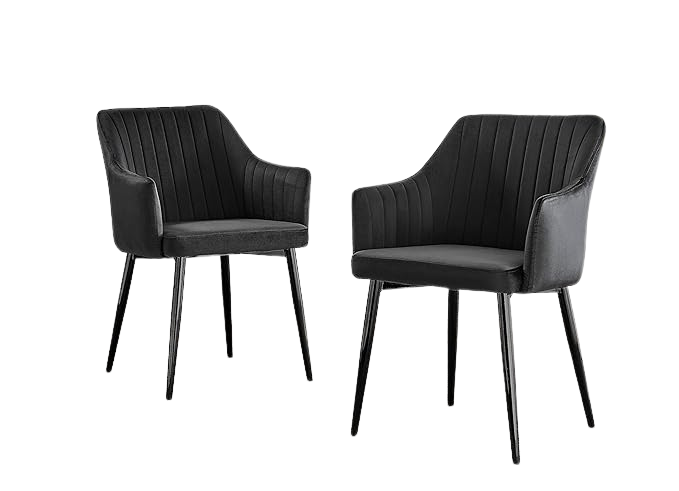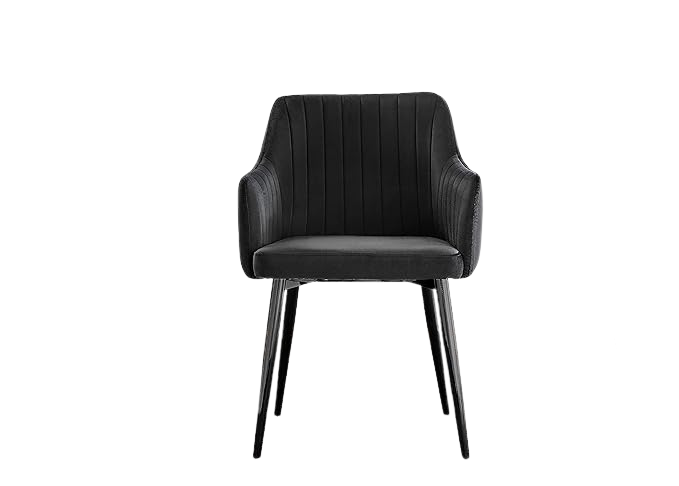This blog dives into the nuanced world of interior design, specifically focusing on the impact of symmetry in creating balanced, visually appealing spaces.
We explore the principles of symmetrical and asymmetrical design, emphasising the importance of furniture arrangement, lighting, artwork, and colour schemes. We offer a comprehensive guide for homeowners and designers alike, aiming to create harmonious, functional, and aesthetically pleasing interiors.
Understanding Symmetry
Foundations of Symmetrical Design
Symmetry in interior design is about creating a visually balanced and aesthetically pleasing environment. This design principle involves the arrangement of furniture and décor in a way that either mirrors or complements each other across a central axis.
This technique can make a space appear orderly, calm, and cohesive. For instance, placing two similar armchairs on either side of a central feature like a fireplace or window creates a classic symmetrical look, offering a sense of stability and formality to the room.

Subtle Symmetry
Symmetry does not always require identical replication of elements. It can be subtly achieved through the use of similar shapes, colours, or textures on opposing sides of a space.
This approach allows for more flexibility and creativity in design, enabling the creation of a space that feels balanced but not monotonous. For example, using a pair of lamps with a similar design but different colours on each side of a sofa can maintain symmetry while introducing visual interest.

Enhancing Room Aesthetics with Symmetry
The use of symmetry can significantly enhance the overall look and feel of a room. It creates a focal point, drawing the eye towards a central feature, and provides a sense of harmony and order.
This is particularly effective in formal settings like dining rooms or entrance halls, where symmetrical arrangements can convey a sense of elegance and sophistication.
Balancing Rigidity with Flexibility
While symmetry can bring a sense of order, it is important to balance it with flexibility to avoid a room looking too rigid or uninviting. This can be achieved by mixing symmetrical arrangements with asymmetrical elements, like off-centre art pieces or an eclectic mix of cushions.
This blend of symmetry and asymmetry allows for a room that is both aesthetically pleasing and comfortable, reflecting a lived-in and approachable ambiance.
The Role of Furniture
Importance of Furniture Selection
Choosing the right furniture is crucial for creating a symmetrical layout.
Furniture serves as the anchor of symmetry in a space, guiding the overall arrangement and flow. Selecting pieces that naturally draw attention, such as Isabella Winchester's "Orion Brilliance Dining Table" or "Dual-tiered Coffee Retreat," can significantly influence the room's layout and aesthetic.

Creating Focal Points
These pieces often act as the focal point in a room, around which other elements are symmetrically arranged. The placement of these key pieces dictates the balance of the space, providing a central axis for symmetry.
Complementing these focal pieces with chairs or decorative items in a balanced way enhances the visual appeal and maintains the symmetrical integrity of the design.

Functional Symmetry in Layouts
The symmetry in furniture layout is not only about visual coherence but also about creating functional and comfortable spaces.
Properly arranged furniture can guide the movement and flow within a room, making the space more liveable and user-friendly. It's about finding the right balance between aesthetic appeal and practical utility.
Visual Coherence and Balance
Symmetrical furniture arrangements help in establishing a sense of order and visual harmony in a space. This approach is particularly effective in formal settings or areas where a sense of calm and order is desired.
However, the key is to strike a balance that avoids making the space feel too rigid or uniform, allowing for a touch of personality and warmth to shine through.
Balancing Elements
Integrating Lighting and Artwork
Beyond furniture, elements like lighting and artwork are essential in achieving symmetry. Placing lamps symmetrically on either side of a couch or evenly spacing artwork can create a balanced look.
This strategic placement of lighting fixtures and art pieces can significantly influence the room's ambiance, adding layers of depth and interest to the design.

Subtle Symmetry with Colour Schemes
Colour schemes also play a vital role in establishing symmetrical balance. Using consistent colours or complementary shades across a room can subtly tie different elements together.
This approach doesn’t require exact matches but instead focuses on creating a harmonious colour flow that enhances the room's overall symmetry.

Creating Visual Harmony
The objective is to achieve a balanced distribution of visual weight. This balance can be achieved through the careful placement and selection of various décor elements, ensuring that they complement rather than compete with each other.
Symmetry in these aspects helps guide the eye smoothly around the space, contributing to a well-thought-out and aesthetically pleasing design.
Cohesive Design Considerations
The emphasis on balancing different elements like lighting, artwork, and colour schemes highlights the importance of considering the room as a whole.
When these elements work together in symmetry, they create a cohesive and inviting environment, where each piece contributes to the overall aesthetic and feel of the space.
Creating Harmony
The Essence of Harmonious Design
In interior design, achieving harmony through symmetry goes beyond merely replicating items. It's about crafting a sense of balance and unity through the thoughtful arrangement of various components.
This approach is not just about matching physical attributes of furniture and décor; it also involves considering the spatial relationships and proportions between different elements. The aim is to create a space where every piece, whether a furniture item or a decorative object, feels like it belongs and contributes to the overall aesthetic of the room.

Complementing Rather Than Mirroring
True harmony in design is achieved when different elements of a room complement each other, enhancing the overall appeal. This can mean pairing a bold, modern coffee table with more subdued, classic sofas, or juxtaposing a sleek, contemporary lamp against a backdrop of traditional wall art.
The idea is to create visual interest and depth by combining different styles, textures, and colours in a way that feels cohesive and balanced.
Spatial Relationships and Proportions
Symmetry is not just about placing two identical items on either side of a room. It's also about the relative proportions and placement of these items in relation to each other and the room as a whole.
A harmonious design considers the size of the furniture, the height of the ceilings, the amount of natural light, and how these factors interact with each other to create a space that feels proportionate and well-arranged.

Achieving a Unified Look
The ultimate goal of creating harmony through symmetry is to design a space where each element complements and enhances the others, resulting in an environment that feels unified and complete.
This doesn’t mean every item has to match perfectly, but rather that they should work together to create a cohesive look. It’s about finding the right balance between similarity and contrast, ensuring that the space feels inviting, comfortable, and aesthetically pleasing.
Experimentation is Key
The Value of Asymmetry
While symmetry is a timeless approach in design, incorporating asymmetry can add a dynamic and contemporary twist to a space. Asymmetrical design brings in a sense of movement and spontaneity, breaking the predictability of symmetrical layouts.
It can be achieved by playing with varying sizes, heights, and colours of furniture and décor, thereby creating a room that feels more relaxed and organic.

Personalisation Through Experimentation
Experimenting with both symmetrical and asymmetrical elements allows for a highly personalised and unique space.
This approach reflects the individual style and preferences of the homeowner, enabling them to create an environment that resonates with their personality and lifestyle. It’s about finding that perfect balance between structured design and creative flair.
Creating Visual Interest
Asymmetry in design can create focal points and areas of interest that draw the eye in a more relaxed, less formal manner.
This could involve using an off-centre art piece, an eclectic mix of furniture, or uneven distribution of lighting. Such elements introduce a sense of surprise and uniqueness, making the space more engaging and lively.
Flexibility and Adaptability
Embracing asymmetry in design also offers more flexibility. It allows for adapting and rearranging spaces according to changing needs or preferences, without being confined to strict symmetrical rules.
This adaptability makes it easier to update or modify the room’s layout over time, keeping the space fresh and relevant.
Expert Advice
At Isabella Winchester, we emphasise a personalised approach to room design. Our diverse furniture collection serves as a foundation for exploring various layout possibilities. We encourage clients to tailor their spaces according to their individual needs and style preferences.
Whether the goal is a symmetrical, balanced ambiance or an asymmetrical, eclectic look, our expertise and range of options can support the creation of a beautiful, functional, and inviting environment. This personalised approach ensures each space reflects the unique character and lifestyle of its inhabitants.

Concluding Remarks
In conclusion, the essence of a well-designed space lies in the balance between symmetry and asymmetry.
The blog highlights the significance of personal style, the functionality of furniture, and the integration of various design elements to achieve a cohesive look. It encourages experimentation and personalisation in design, supported by our extended philosophy.

